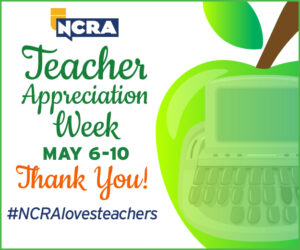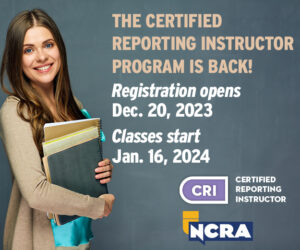By Natalie Nazar
I reconnected with my long-lost brother in Calgary, Alberta last month. We reminisced about our school days in small town Québec, and he said to me, “Natalie, all I remember from high school is sitting down at the beginning of first period and zoning out for the rest of the day, every day, for five years.”
“That’s a lot of time wasted!” I gasped. “Where were your teachers? Didn’t you receive any guidance?”
We had both gone to the same school and had the same teachers, but it was clear that our experiences were the exact opposite. What made his experience so different from mine?
We realized that we had completely different learning styles. Unfortunately for my brother, our teachers only taught one way. It is important for teachers to recognize those different learning styles to help their students succeed. When it comes to steno, the teaching style, whether visual, auditory, or kinesthetic, needs to match the students’ preferred learning styles in order to be effective. With a repetitive subject like steno, it can be difficult to accommodate all those learning styles creatively. Much like learning a musical instrument, steno requires a great deal of discipline, determination, and practice every day. But when so much depends on the student, how can court reporting instructors help students succeed?
The answer lies in psychology. Humans are capable of astounding things if they are mentally well prepared. Therefore, steno instructors must provide students with strategies to support their mental resilience. Failed speed tests, dropping, finger acrobatics, fear, and anxiety are made manageable with strategies such as deep breathing, meditation, and visualization.
Teachers should approach students holistically, taking into account their different backgrounds, lifestyles, and personalities. They must keep in mind that each student will progress at a different rate and some issues may require individualized attention. A student’s emotional state has a great deal of impact on their success, and a great teacher can support their student through validation. Take some time to listen to the student’s concerns, and give them the benefit of the doubt. A simple “Thank you for sharing that with me” can make a world of difference to a student who thinks he or she is the only one having difficulties. It is crucial that the solutions you provide instill personal responsibility in the student. In other words, a simple pep talk is not enough. They need to be provided with strategies based on their individual needs to help solve the problem independently and take the next steps in their learning. All of this points towards exceptional teaching being learner-centered.
Dictation can quickly become the main method of instruction in court reporting school. Some teachers become veritable Dictaphones. This is boring work. Bored teachers lead to bored students. Time to try something new. Exceptional teachers assess students’ weaknesses, such as a problem strokes or hesitation concepts, and design drills that focus on those difficulties. Much like athletes work on individual skills to improve their overall game, steno writers must also focus on smaller, achievable goals to improve their overall writing. Encourage your students to keep track of all the small goals they need to overcome to put all the pieces of the puzzle together. Record what has worked and what has failed for each individual student. Make sure to follow up with them on their progress, and give them constructive and fair feedback on their work. Never let a student leave a feedback session without providing a specific strategy for improvement, such as flashcards, drills, or useful briefs.
Students expect teachers to know what they are talking about. This means teachers must stay on top of their own steno game. Keep a professional portfolio of strategies, notes, and lesson plans that have worked for you. Referring to these notes will help bring your future classes alive with valuable insight.
Reflecting on your own challenges as a stenographer will help build empathy for your students’ struggles. Empathizing with your students will allow you to effectively identify problems and provide an array of solutions. Remember the five stages of learning: (1) Pay attention and be receptive to each student’s personal scenario. (2) That information is useful in order for you to (3) process, understand, and draw accurate (4) conclusions. (5) The test is the final step.
Steno looks easy, but as we know, it involves an intense mental struggle. It’s messy, and it will make you sweat and cry. Put yourself in your students’ shoes. As Stan Sakai suggests in the court reporting documentary For the Record, steno is like going to battle against words that are continuously being thrown at you. It is excruciatingly intense, and exceptional teachers will empathize with that. One student once told me, “Speedbuilding is like constantly hitting your head against a brick wall. Each level is like starting over again from scratch.” As the NCRA speed contests show us, there is no end to speedbuilding. And that is both the beauty and curse of stenography. Record speeds are not the students’ goal. Their goal is only to get to the next level through achievable steps. Nurturing resilience and a desire for challenge will help them get there.
Natalie Nazar is a freelance reporter in Toronto, Ontario, Canada. She can be reached at nazarreporting@outlook.com. This article was written as part of the requirements for NCRA’s Court Reporting Instructor course.








